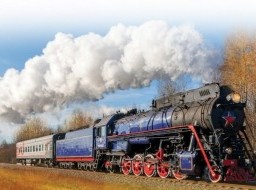Ryazan
Ryazan is a city in Russia, the capital of the Ryazan region, standing on the right bank of the Oka River. It is a major scientific, military and industrial center of the country, a large river port located 196 km south-east of Moscow. The population of Ryazan is about 534,000 (2015), the area - 224 sq. km. Ryazan historyThe first settlements appeared on the territory of present Ryazan in the era of the Middle Paleolithic. More than 100 sites and settlements of ancient people were discovered in the Ryazan region. Slavic tribes (Vyatichi) came to the Oka River area in the 6th century. In the 7th-8th centuries, a whole network of settlements was founded around the city. At the beginning of the 12th century, Ryazan land became an independent Murom-Ryazan principality. It was the time of rivalry between Ryazan and Murom for the right to be the capital of the new state. Locals were engaged in agriculture, hunting, fishing, and apiculture. In 1208, the town was sacked and burned by Vsevolod Bolshoye Gnezdo, the Prince of Vladimir. Ryazan was captured and destroyed again by the Mongols in 1237. In the mid 14th century, the center of principality was moved to Pereyaslavl-Ryazansky. In 1778, Ryazan vice-gerency was formed. Later it became a gubernia and Pereyaslavl-Ryazansky received its current name “Ryazan” and a coat-of-arms depicting a prince with a sword in his hand. Trade was well developed in the town. In the early 18th century, Ryazan merchants owned about 18% of the Moscow bread-making market. By the end of the century, about 10,000 people lived in Ryazan. In 1786, a school was opened, one year later - a theater of opera and drama (one of the oldest in Russia). During the Patriotic War of 1812, a lot of people from the occupied Russian territories moved to Ryazan. In 1837, a great fire destroyed most of the wooden buildings. A lot of new brick buildings were constructed, including the artillery barracks (today, it is a hospital building located on Pervomaysky Avenue), in 1850-1854s - the building of Nobility Assembly with the coats of arms on Astrahanskaya street. By 1860, the population of Ryazan was 21,600. In 1890, the railway station building was constructed. Ryazan became a large railway station, about 20,000 tons of various cargo was dispatched from it. At that time, there were over 15 small plants in the town including an iron foundry and brick works. By 1897, the population reached 46,000. In 1913, Ryazan power station was put into operation. One year later, the town received a telephone connection with Moscow. The economic devastation caused by revolutionary events and the Civil War ruined the city’s economy. In 1918, the industrial output was only 20% of the pre-war level. In 1929-1930s, Ryazan was part of Moskovskaya oblast, since 1937 - the capital of Ryazanskaya oblast. After the Second World War, the city began to grow rapidly, various plants were put into operation. Ryazan transformed into a major industrial, scientific, and military center of the European part of Russia. Heavy and non-ferrous metallurgy, oil refining, machine tool industries, mechanical engineering, and food industry became the leading industries of Ryazan economy. Several major research universities were opened in Ryazan: Medical University, Radio Engineering Academy, Institute of Agriculture, Institute of Culture. Ryazan became the main training center of the Airborne Forces of the country. In 1995, Ryazan celebrated its 900th anniversary. Ryazan featuresOriginally “Ryazan” was the name of the capital of the Ryazan principality located about 50 km south-east of the present city. Today, you can find the historical and landscape museum-reserve Staraya Ryazan (old Ryazan) there. Ryazan climate is temperate continental. The average temperature in February is minus 7.9 degrees Celsius, in July - plus 19.2 degrees Celsius. The coat of arms and flag of Ryazan are the image of a prince standing in a golden field and holding a silver sword in his right hand and a silver sheath in his left hand. The sword symbolizes protection. The prince is a collective image of a defender of the motherland and does not refer to a specific person. In the city and around it, there is a network of monasteries, some of them - Holy Trinity, Solotchinsky, Poschupovsky - are among the oldest monasteries in Russia. The main types of urban transport are buses, trolley-buses, and minivans. Ryazan land, one of the oldest areas of Russia, is the historical successor of the Grand Duchy of Ryazan. In Ryazan and around it, there is a whole network of different architectural, cultural, natural, and archaeological sites. A relatively well-developed network of hotels, resorts, and campgrounds allows tourists to visit the sights of the Ryazan region without the daily arrival at Ryazan. Ryazan places of interestRyazan Kremlin is the core of the city, an architectural dominant of the historical part of Ryazan. It was founded on a hill at the confluence of the Trubezh and the Lybed rivers in 1095. Ryazan Kremlin got its present look in the beginning of the 20th century. Next to the Kremlin, you can find Soborny (Cathedral) Park, the complex of Transfiguration Monastery, Prioksky Forest Park. During navigation, you can go sightseeing by river buses from the Kremlin pier. Two main squares of Ryazan, Sobornaya Square and Lenin Square, are located south-west of Ryazan Kremlin. The main streets of Ryazan are Sobornaya Street overlooking Sobornaya Square, Pervomaysky Avenue leading to Assumption Church of the Kremlin and Lenina Street, which crosses Ryazan from the southeast to the northwest. The whole central part of Ryazan has a lot of historical buildings. Saltykov-Shchedrin, Uritskogo, Sadovaya streets represent a rare example of Russian wooden architecture, but unfortunately, under the pressure of modern high-rise buildings, unique monuments of wooden architecture are gradually lost. Ryazan has a number of buildings built in the classical style: a gymnasium (current Polytechnical Institute, 1808-1815), the former Nobility Assembly (the early 19th century), a hospital (1816), a market (first half of the 19th century). Ryazan museums
Ryazan theaters
|




